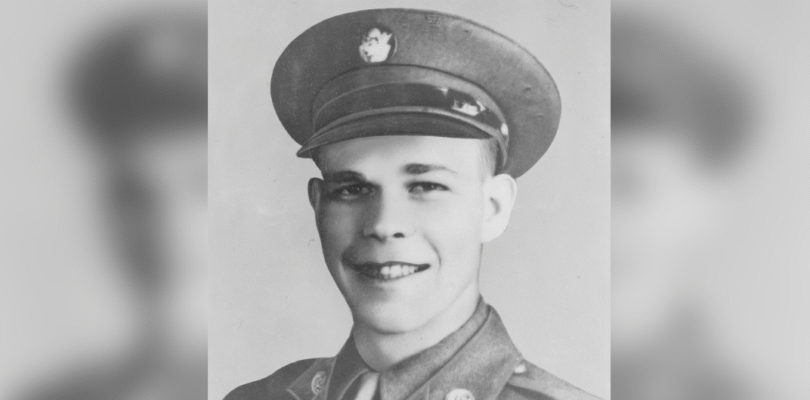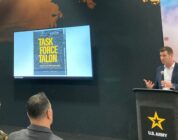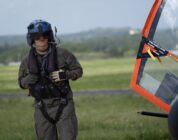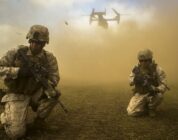Airborne soldiers are inherently vulnerable when they enter battle, dangling from a parachute or sitting in a glider or a helicopter. With that in mind, they undergo exceptional combat training, aimed at making up for things from the moment they’ve landed and regained control of their fate.
Even by their own formidable standards, there are occasions when they outdo themselves.
Such is the case of Pvt. John Towle who, faced with a company-size enemy force with armor support, took initiatives worthy of an officer and comported himself like a one-man anti-tank unit.
Enlisting in the U.S. Army in March of 1943, the Ohio native underwent rigorous training with the newly created airborne units and assigned to Company C, 504th Parachute Infantry Regiment 82nd Airborne Division.
It didn’t take long for Towle to add experience to his intense training foundation as the 82nd Division made its way through brutal campaigns in North Africa, Italy and France. During that time, he became C Company’s rocket launcher specialist, excelling in the use of the M1A1 2.36-inch “Bazooka.”
On Sept. 17, 1944, the 504th PIR took part in the ambitious multi-target offensive to liberate the Netherlands, dubbed Operation Market Garden. Results of this, the largest airborne operation of the war thus far, varied considerably, with the British and Polish attempts on Arnhem falling painfully short.
The 82nd Airborne, by comparison, was one of the successes, with its troopers fighting their way across the Waal River and securing Nijmegen’s bridges by Sept. 20.
As of Sept. 21, the 504th PIR was holding the western sector of the Nijmegen bridgehead when word spread of a German counterattack approaching the Dutch hamlet of Oosterhout.
Towle, occupying the leftmost foxhole, evaluated his situation, took up his M1A1 and ran 200 yards forward through small arms fire until he reached an exposed dike roadbed. There he confronted about 100 German soldiers backed up by two Panzerkampfwagen Mark IV tanks and a half-track.
“With full knowledge of the disastrous consequences resulting not only to his company but to the entire bridgehead by an enemy breakthrough,” reads his Medal of Honor citation, Coolly fired, reloaded and re-fired his rockets, striking both of the enemy tanks.
The Germans were already familiar with anti-tank rockets and had developed a counter to the threat in the form of steel screens on both sides of the hull, causing the shaped charges to explode prematurely without penetrating the armor. Both tanks suffered minor damage and their crews discretely pulled back from the field.
Undeterred and advancing further, Towle came upon a house that nine Germans had commandeered as a strongpoint. He fired one explosive round and killed all the occupants.
Withdrawing to replenish with more rockets, Towle then rushed forward 125 yards to another exposed position and dropped to one knee to engage the half-track — only to be mortally wounded by a mortar round.
Dead at age 19, he had single-handedly stopped a German counterattack in its tracks. “By his heroic tenacity, at the price of his life, Pvt. Towle saved the lives of many of his comrades and was directly instrumental in breaking up the enemy counterattack,” according to his citation. Nijmegen remained in Allied hands for the duration, a worthy victory within an overall defeat.
On March 25, 1945, the Towle family arrived at Fort Knox, Kentucky to receive Towle’s Medal of Honor from the base’s commander, Maj. Gen. Charles L. Scott.
In 1949, Towle’s remains were finally returned to his hometown of Cleveland and buried in Calvary Cemetery on Jan. 23. The ceremony was presided over by the 82nd Airborne’s famed Maj. Gen. James “Jumpin’ Jim” Gavin.
Built in time to participate in the 1945 Battle of Okinawa, the 8,500-ton Greenville Victory ship, Appleton Victory, was rechristened USNS Private John R. Towle (T-AK-240) in 1947 and as such, served both the Army and Navy and supplied expeditions in the Arctic and Antarctic oceans until finally scrapped in 1984.
His name also lives on in the Towle Fitness Center at Fort Bragg, a street near Nijmegen named in his honor in 2019 and a local monument erected to his memory in 2024.




